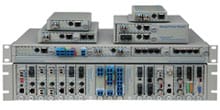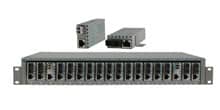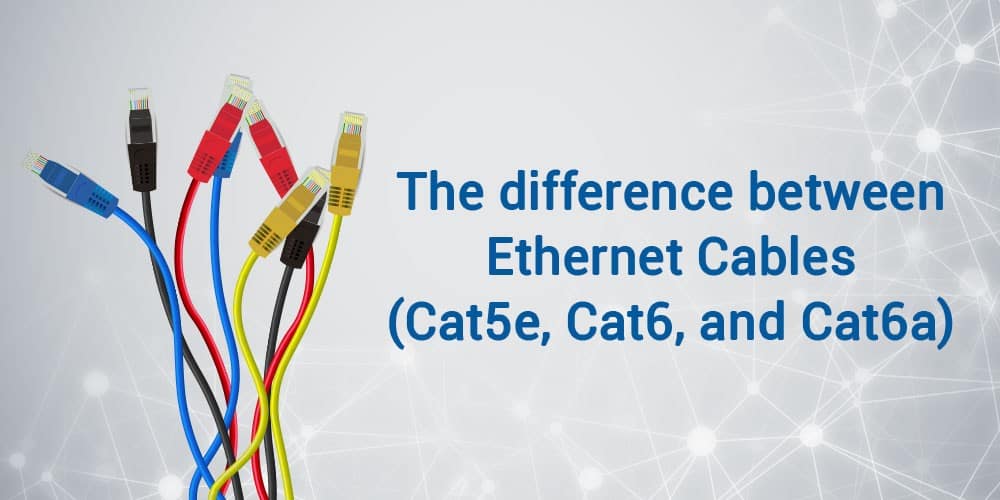- Products
- Product Lines

- iConverter Managed Multi-service Platform
- Copper to Fiber Media Converters
- Ethernet Media Converters
- 10 Gigabit Copper-to-Fiber
- 10/100/1000 Copper to 10 Gigabit Fiber
- 10/100/1000 Copper-to-Fiber with Integrated Management
- 10/100/1000 Industrial Copper-to-Fiber with Integrated Management
- 10/100/1000 Copper-to-Fiber with VLAN
- 10/100/1000 Dual Media Converter with VLAN
- Gigabit Copper-to-Fiber
- 10/100 Copper-to-Fiber with Integrated Management
- 10/100 Industrial Copper-to-Fiber with Integrated Management
- 10/100 Copper-to-Fiber with VLAN
- 10/100 Copper-to-Fiber
- Fast Ethernet Copper-to-Fiber
- Fast Ethernet Redundant Links
- 10Mbps Copper-to-Fiber
- 10Mbps Copper to Coax
- TDM Media Converters
- Serial Media Converters
- Ethernet Media Converters
- Fiber to Fiber Media Converters
- 10 Gigabit Fiber-to-Fiber Converter and Transponder
- 10 Gigabit Industrial Converter and Transponder
- SFP-to-SFP Fiber Converter and Transponder
- SFP-to-SFP Industrial Fiber Converter and Transponder
- Gigabit Fiber to-Fiber with 3 Rs
- 100/1000 Fiber-to-Fiber with 3 Rs
- Gigabit Fiber-to-Fiber
- Fast Ethernet Fiber-to-Fiber with 3 Rs
- Fast Ethernet Fiber-to-Fiber
- OC-3/STM-1 Fiber-to-Fiber
- OC-12/STM-4 Fiber-to-Fiber
- Carrier Ethernet Network Interface Devices
- CE 2.0 - 10G Demarcation NID
- CE 2.0 - 10G Demarcation and Aggregation NID
- CE 2.0 - 10/100/1000 Mult-port NID
- CE 2.0 - 10/100/1000 Mult-port NID with PoE
- CE 2.0 - 10/100/1000 8-Port NID
- SFP NID - Gigabit SFP NID
- microNID - 100/1000 compact NID
- CE 1.0 Service OAM - 10/100/1000 NID
- CE 1.0 Link OAM - 10/100/1000 Copper-to-Fiber NID
- CE 1.0 Link OAM - 10/100 Copper-to-Fiber NID
- CE 1.0 Link OAM - Gigabit Fiber-to-Fiber NID
- CE 1.0 Link OAM - Fast Ethernet Fiber-to-Fiber NID
- CWDM Multiplexers
- T1/E1 Multiplexers
- Ethernet Switch Modules
- Management System
- Chassis Options

- 1-Module Industrial Chassis

- RuggedNet Industrial Switches and Extenders
- Industrial PoE PSE Fiber Switches
- Multi-Gigabit Managed Industrial PoE+/BT Switches
- Multi-Gigabit Unmanaged Industrial PoE+/BT Switches
- 10G Managed 802.3bt PoE Switches
- 10G Unmanaged 802.3bt PoE Switches
- 10G Managed PoE+ Switches
- 10G Unmanaged PoE+ Switches
- 1G Managed PoE+ Switches
- 1G Unmanaged PoE+ Switches
- 1G Unmanaged 802.3bt PoE Switches
- 1G Managed 802.3bt PoE Switches
- Industrial Ethernet Switches
- Industrial PoE Copper Extenders
- Industrial Power Supplies

- OmniConverter Media Converter, Switches and Extenders
- PoE PSE Media Converters
- 10/100/1000 Multi-port PoE Media Converter
- 10/100/1000 Multi-port High-Power PoE Media Converter
- 10G Multi-Gigabit / Multi-Rate PoE Media Converter
- 10G Multi-Gigabit / Multi-Rate Media Converter
- Industrial 10/100/1000 Multi-port PoE Media Converter
- 10/100/1000 Cost-Effective Multi-port PoE Media Converter
- 10/100 Multi-port PoE Media Converter
- Industrial 10/100 Multi-port PoE Media Converter
- 1U Rack-Mount Shelf
- 10/100 Cost-Effective Multi-port PoE Media Converter
- PoE PSE Compact Switches
- Multi-Gigabit Managed PoE+/BT Switches
- Multi-Gigabit Unmanaged PoE+/BT Switches
- 10G Managed 802.3bt PoE Switches
- 10G Unmanaged 802.3bt PoE Switches
- 10G Managed PoE+ Switches
- 10G Unmanaged PoE+ Switches
- 1G Managed PoE+ Switches
- 1G Unmanaged PoE+ Switches
- 1G Managed 802.3bt PoE Switches
- 1G Unmanaged 802.3bt PoE Switches
- Ethernet Switches
- PoE Copper Extenders
- PoE Injectors

- miConverter Unmanaged Miniature Media Converters
- 10/100/1000 Copper-to-Fiber
- Industrial 10/100/1000 Copper-to-Fiber
- 10/100/1000 Ultra-Compact Copper-to-Fiber
- Gigabit Copper-to-Fiber
- 10/100/1000 Copper-to-Fiber PoE Powered
- 10/100 Copper-to-Fiber
- 10/100 Ultra-Compact Copper-to-Fiber
- 10/100 Copper-to-Fiber PoE Powered
- 18-Module Chassis
- Industrial 10/100 Copper-to-Fiber PoE Powered

- FlexSwitch Compact Switches
- Solutions
- Company
- Resources
- Downloads
- Omnitron Product Catalog
- White Papers
- Visio Stencils
- BICSI Continuing Education Credits
- Earn CECs with free online videos
- Get a Quote
- Support
The difference between Ethernet Cables (Cat5e, Cat6, and Cat6a)

Understanding the differences between Ethernet cables, such as Cat5e, Cat6, and Cat6a, is essential whether you're a network engineer for a large corporation or a tech enthusiast just trying to upgrade your home network. In this post, we will examine various cables, their speeds, and which is the best option for your needs.
What is an Ethernet Cable?
Let's start with the fundamentals before delving into Cat5e, Cat6, and Cat6a details. An Ethernet cable is a network cable frequently used to connect devices like computers, routers, network switches, and gaming consoles to LANs and the Internet. These cables transmit data through electrical signals, providing a stable and speedy connection.
Ethernet cables consist of four twisted copper pairs enclosed in a protective outer sheath. The twisted pairs help reduce crosstalk and electromagnetic interference, ensuring a stable connection. They are available in various lengths and colors, making them versatile for different networking needs.
Cat5e Ethernet Cable
Cat5e, or Category 5e, is popular for many home and office setups. It's known for its affordability and decent performance. Cat5e cables can support data speeds of up to 1,000 Mbps (or 1 Gbps) and are suitable for most everyday internet tasks like web browsing, streaming, and online gaming. However, they may struggle with heavy data loads, making them less ideal for professional applications.
Cat6 Ethernet Cable
Cat6, or Category 6, Ethernet cables are an upgrade from Cat5e. These cables offer improved performance compared to Cat5e, with the ability to support higher data speeds. Cat6 cables can support data speeds of up to 10,000 Mbps (or 10 Gbps), making them a great choice for home and professional use. Cat6 Ethernet cables achieve this by utilizing stricter specifications and better insulation, reducing the risk of crosstalk and interference. If you need high-speed data transfer, such as 4K video streaming or large file transfers, Cat6 is an excellent option.
Cat6a Ethernet Cable
Cat6a, or Category 6a, Ethernet cables has twice the bandwidth capacity as Cat 6. They are designed to support data speeds of up to 10,000 Mbps (10 Gbps) like Cat6 cables but over longer distances compared to Cat6 cables. Cat6a cables improved shielding against crosstalk and interference, which makes them more resistant to electromagnetic interference, ensuring reliable performance in demanding environments.
| Category | Number of pairs | Speed | Bandwidth Frequency | Distance | Cable type |
|---|---|---|---|---|---|
|
Cat5e |
4 pairs |
1000Mbps |
100MHz |
100m |
UTP |
|
Cat6 |
4 pairs |
10Gbps |
250MHz |
55m |
UTP/STP |
|
Cat6a |
4 pairs |
10Gbps |
500Mhz |
100m |
STP |
FAQs
How To Connect Ethernet Cable?
Connecting an Ethernet cable is a straightforward process. Simply plug one end of the cable into your device (e.g., computer or router) and the other end into a compatible port on your network switch.
What Does an Ethernet Cable Do?
Ethernet cables transmit data between devices, allowing them to communicate and share information over a network. They are the backbone of wired internet connections.
How Long Can an Ethernet Cable Be?
Ethernet cable lengths can vary, but the maximum recommended length for reliable performance is 100 meters (approximately 328 feet). Beyond this length, signal quality may degrade.
What Are the Best Ethernet Cables?
The best Ethernet cable for you depends on your specific requirements. Cat6 and Cat6a are excellent choices for most users, offering a balance of performance and affordability.
Can Ethernet Cables be Used for Gaming?
Yes, Ethernet cables are highly recommended for gaming. They provide a stable and low-latency connection, which is crucial for online gaming.
Conclusion
In conclusion, the choice between Cat5e, Cat6, and Cat6a Ethernet cables depends on your specific needs. If you're looking for a cost-effective solution for everyday use, Cat5e is a solid choice. For faster data transfer and better performance, Cat6 is a step up. And if you need top-notch performance, especially for high-demand applications, Cat6a is the way to go.
If you have any future questions, contact Omnitron Systems, we are available 24/7 to answer your questions.Call us now!









